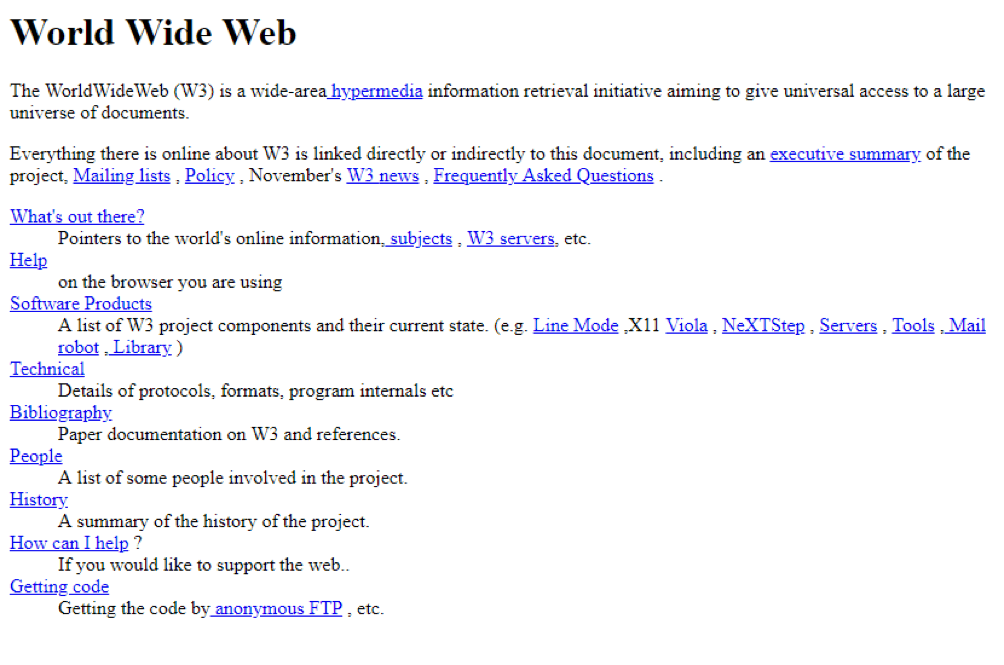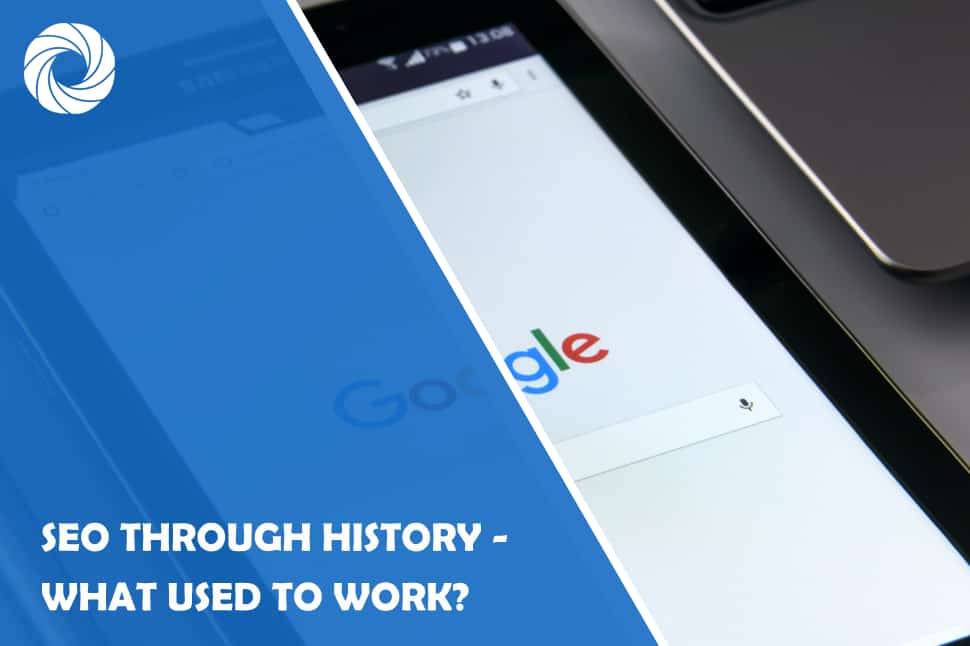Compared to the rest of human history, the Internet has been around for a blink of an eye. However, in these approximately three decades, we have come a very long way indeed, and the internet these days looks nothing like its first version. One other thing that has also changed drastically over the years is search engine optimization. People forget, but Google didn't always reign supreme like it does today.
In fact, it took a few years for it to even appear. And if we take a look at how and why SEO evolved, we might be able to get a glimpse of the future that awaits us. So sit down for a few minutes and join us on this interesting journey through the history of SEO.
The Beginning
The internet was born on August 6, 1991, when the very first website ever was launched by Tim Berners-Lee. Ever since then, it has been growing at an incredible pace, so very soon, a need for browsing it easily appeared. To answer this need, many search engines started popping up within just two or three years since the Internet's inception. Yahoo was born in 1994, AltaVista, in 1995, and Ask.com was created in early 1997 under the name AskJeeves.

Then, in late 1997, Google.com was created.
Putting User Experience First
Google's founders Sergey Brin and Larry Page were very much aware of the problems search engines were facing when they launched the company. In the paper they published in 1998, they proposed a solution all of that – a system called PageRank, whose main goal was to connect the user to the content of the best possible quality. Still, it took them a few years to do something about that, although they did publish guidelines for SEO that focuses on the user (the so-called white hat SEO) in 2000. However, it wasn't until 2003 that things really started rolling.
In November of that year, an update to Google's search engine (its name was Florida) hit the internet like a truck. There were huge changes in the way websites were now being ranked, and a whole bunch of them saw their position plummet or soar sky-high. Things like hidden text and hidden links became a thing of the past, and way more than half of the results that had previously appeared in the top 100 were gone. But that was just the beginning.
It didn't take Google too long to continue laying the foundation of its fledgling empire. In 2005, we saw the introduction of Google Analytics, and the searches started becoming personalized: the engine now took into consideration your browsing history when presenting search results to you. We may be taking that for granted now, but in those days, that was quite a leap.
Real-Time Ranking
A few years later, we saw another big move by Google. An update called Caffeine was introduced with the goal of increasing the speed of crawling and, perhaps more importantly, ranking things in real-time. And while Caffeine wasn't fully implemented until 2010, real-time ranking took off in December of 2009 and had a profound impact on the world of SEO.
The reason why this was the case was that Google started including things like tweets and news into its result. This expanded the base of the people who had to take SEO into consideration significantly. Journalists, for example, would have to keep that in mind if they wanted their news to reach the audience first, especially when some breaking news occurred and every second counted.
Caffeine was a completely new indexing system that emphasized the freshness of information available to an average user. And since Google was with this able to index things in a matter of seconds, websites that were quick to publish stories on the most current events reaped the benefits of the update. In fact, in 2010, Google announced that website speed was a major factor in determining websites' rank. On top of that, Caffeine allowed Google to take into consideration later developments, such as the rise of mobile devices, and adequately prepare for them. But it didn't stop there.
Penguin and Panda
The following two years brought another two major updates – Penguin and Panda – in an attempt to further promote high-quality content as the main driving force for high ranks.
Panda was unleashed in 2011, with its target being a special type of websites called content farms. Despite their name, the quality of the content these websites produced was exceptionally poor, although the amount of content produced was very high. Content farms wanted to rank highly with little effort in order to get additional revenue flowing in. However, Panda saw them almost completely wiped out.
Soon after that, Penguin entered the fray. Its job was to get rid of the websites that, although with fairly decent content, used too many links that didn't have much to do with the websites' main purpose. These websites were also packed with keywords and used all sorts of other non-white hat SEO tactics (although the link issue was the main problem), so Google was adamant that they had to go.
Both of the updates duly delivered, and the websites they targeted saw their traffic greatly reduced, if not cut off completely. And while Panda received many more updates over the next few years than Penguin, they were both eventually made integral parts of Google's algorithm. Their introduction further solidified high-quality content as the best way to rank well and narrowed down the space that could be used for tricking the search engine into ranking something highly. However, soon another big change would occur.
The Rise of Mobile Devices
This wasn't the end of it because Google cracked down on pop-ups on mobile websites soon after that, further improving the experience of mobile users. Not only that, but in 2018, the company announced that they would be switching to mobile-first indexing, meaning that they would „use the mobile version of the page for indexing and ranking, to better help our – primarily mobile – users find what they're looking for,” as they officially put it. Another mobile-centered move occurred in July of that same year when page speed became a factor for mobile pages. However, at the same time, Google had been shifting its focus to another field.
AI
Yes, artificial intelligence became the focus of Google's efforts, and we saw those efforts peak at the end of 2019 when BERT was finally released. This natural language processing system is designed to „explain” to the search engine the nuances of what people really mean when they type in something and hit the search button. And while no big upheavals in the ranking were reported after the release, Google explained that this was primarily because BERT was meant to target long-tail keywords. According to the company, about 10% of websites were affected by this release.
BERT's importance lies in the fact that it covers about 70 different languages, which means that the engine has a much clearer understanding of a huge chunk of the world's population. This means that you will now get even more precise results than before when you type in a long-tail query.
Overall
As many experts and Google itself have pointed out, there is no real way to better optimize your sites for this new system. It just helps connect people with what they really want to find. The fact that the search engine now has a better understanding of human language means that website creators can now act in a more natural way and worry less about „appeasing” Google's algorithm. Instead, they can now relax and focus even more on creating high-quality content than before. More than ever, it is the content, the value your website provides, that will launch you to the top of the ranking system.
